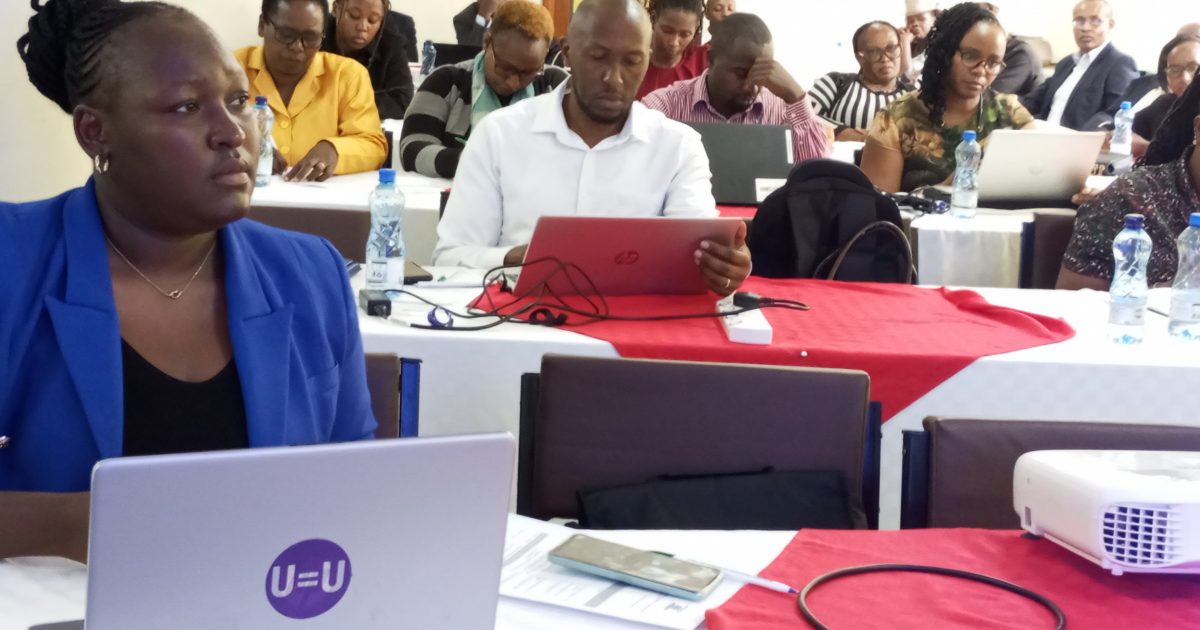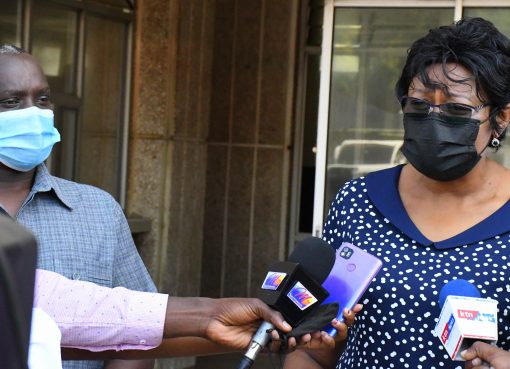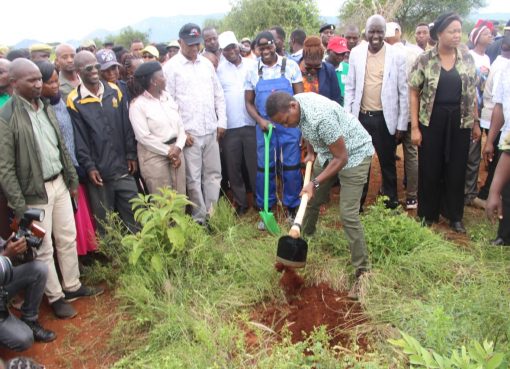Murang’a county health officials have called for a multi-sectoral approach in the fight against new HIV infections, teenage pregnancies and Gender Based Violence (GBV) among adolescents and young people.
The officials who noted that adolescents and young people were at higher risk of being victims of GBV; contracting HIV as well as the increased risk of teenage pregnancies, agreed there was a need to leverage the national, county and community health and social systems to combat the triple threat among people between the age of 10-19.
While speaking during a stakeholder engagement forum, the County Director of Health Dr. James Mburu underscored the importance of networking to leverage on the strengths and roles of different departments in the fight against the triple threat.
“By encouraging partnerships in this fight and forging connections and networks, we can ensure better outcomes for our young people,” Mburu said.
He stated that in addition to high numbers of teenage pregnancies, the adolescents and young people constituted a large percentage of the new HIV infections and they were also more likely to be victims of GBV hence the need for a multi sectoral approach.
The National Syndemic Diseases Control Council (NSDCC) representative Marion Mashoo led the county stakeholders in the review of the national data on the triple threat in a bid to foster collaborations among different stakeholders in prevention of the triple threat among adolescents and young people.
“According to a 2023 report, Kenya ranks seventh globally in the HIV epidemic with an estimated 1.377 million Kenyans living with HIV in 2023,” Mashoo said.
She further stated that of those living with HIV, 67,869 are children between the age of 0 to 14 years.
The key populations among the new infections are female sex workers, men who have sex with men and people who inject drugs.
Mashoo noted that the cases of HIV infections have gone down significantly over the years.
“There were 101,560 new infections in 2013 and 22,154 new infections in 2022, showing that we are making significant progress as a country,” she observed.
She noted that adolescents and young adults contributed to 75 percent of new HIV infections in 2022, hence the need for concerted efforts in the fight against new infections among that demographic.
On teenage pregnancies, the national statistics for 2022 show that there were over 13000 pregnant children between the ages of 10 to 14 and 241,514 between the ages of 15 to 19 years.
The report also shows that in 2023, more than 3400 children between the ages of 0 to 9 were victims of sexual GBV as well as 20000 children between the ages of 10 to 17.
Mashoo further called upon concerted efforts among stakeholders, to enable survivors to seek justice, to provide treatment, care and mental wellness for survivors.
She also underscored the importance of a return to school policy for adolescent mothers.
In Murang’a County the County AIDS and STIs Coordinator (CASCO) David Kinyanjui noted that new infections were still high in the county with new 1346 cases recorded in 2023.
He said the county is committed towards reducing the number of new infections by 50 percent and reducing the number of aids related deaths by 25 percent.
The CASCO said that the county had put in place several measures to combat the number of infections among the female sex workers, men who have sex with men and people who inject drugs.
“We conduct HIV tests, give them condoms, give ART to those who test positive as well as offering family planning services to the female sex workers,” he said.
Caroline Macharia, who is in charge of reproductive health in the county, noted that 7 percent of all pregnant women in Murang’a are teenagers.
“The national average is at 15 percent which is too high and although the number is lower in Murang’a there is still much to be done,” she said.
Macharia called for community dialogue and outreaches as preventive measures to end the menace that is teenage pregnancies.
Patrick Mwangi, the county GBV coordinator, noted that the cases of GBV in Murang’a were high, with 24 percent of women between the ages of 15 to 49 having experienced sexual gender-based violence.
“24 percent is quite high compared to the national average of 13 percent, hence the need for concerted efforts in the fight against GBV,” Mwangi said.
He called upon all stakeholders to treat cases of GBV with urgency as GBV is directly related to cases of HIV infections and teenage pregnancies.
“Reporting these cases in time allows the victim to access medication that prevents HIV and pregnancy and also allows law enforcement officers to gather evidence that can be used in court,” he explained.
Mwangi called on the stakeholders drawn from the health department, police, National Government Administration Officials (NGAO), Office of the Director of Public Prosecution (ODPP), the Judiciary and the clergy to work together to prevent the triple threat and ensure those already affected get the help they need and justice.
By Purity Mugo





